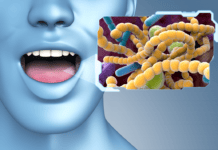The United States has a growing demographic of older adults, those 65 years of age and older, who are increasingly becoming a large part of dental practices. Dental professionals can play an integral part in helping this population to overcome physical, cognitive, and environmental changes; including challenges in relation to their oral health that they may face with aging. Dental hygienists hold a unique position with the ability to build relationships with patients, evaluate health history and daily routines, and provide patient specific interventions to help maintain optimal oral health.
The Federal Interagency Forum on Aging-Related statistics has projected that by 2030 adults ages 65 and older will account for almost 20% of the total U.S. population1. Dental professionals should be prepared to address the age-specific needs these patients will present within the dental setting. Periodontitis, root caries, and xerostomia are among the most prevalent and concerning oral conditions for older adults3.
Beginning each visit with a full review of medical history is a wonderful place to start learning what health issues may have adverse effects on the patient’s oral health or ability to maintain it. The most common ailments people ages 65+ present with are hypertension, arthritis, heart disease, cancer, diabetes, COPD, depression, and dementia1. Many of the medications used to treat these diseases may cause medication-induced xerostomia, more commonly known as dry mouth. A 2011-2012 NHANES assessment found that 39% of this population take five or more medications daily, compounding the severity of the oral manifestations brought on by xerostomia. For those aged 65 and older 30% were found to suffer from xerostomia, increasing to 40% by age 801.
In addition to health and medication-induced conditions, oral health can be affected by biological changes as well. Oral mucosa may thin, lose elasticity and stippling, and the tongue may become smooth and have less filiform papillae. Changes in dentin, such as obstruction of dentinal tubules or dentin sclerosis may occur, and the pulp chamber housing the nerve may experience a reduced blood supply, calcification, and overall loss of reparative capacity over time3. Any of these issues, and more likely a combination of more than one, may create pain, issues with eating and speaking, and exacerbate other health issues in a domino effect.
Education is key to prevent as many age-related dental issues as possible. Dental hygienists should begin to discuss oral health changes that may occur after retirement age, as early as age 50, with patients. Dental preventative care and restorative maintenance should be considered as any medical care would be in retirement planning. After age 65, barriers that patients face in obtaining regular professional care must be considered first. Finances and transportation can be a large factor in an older adult’s ability to present for regular care. Misconceptions such as “dentures are as good as natural teeth,” “no pain means no problem,” or that “bleeding is being caused by brushing and flossing” should be addressed to encourage informed treatment decisions and healthy habits2.
Cognitive, behavioral, and physical limitations may also contribute to a person’s overall ability to provide self-care daily concerning dental hygiene. Learn about the patient and establish a plan of action2.
Here are some considerations for managing geriatric patients:
- Consider more frequent 3-4 month recall with fluoride application for patients at a higher risk of decay or who may have more limited abilities with maintaining care at home.
- Be cognizant of the range of products that may stimulate saliva production, temporarily relieve dry mouth, and dilute bacteria, such as alcohol-free mouthwashes with fluoride, and gum and lozenges that are sugar-free or that contain xylitol (a natural sugar alcohol with cariostatic properties that works by neutralizing plaque acids and oral pH). Encourage all day hydration with water as opposed to sugary drinks or acidic beverages. Many companies offer samples or coupons to encourage patients to try these aids.
- For those with physical limitations or limited dexterity, offer specific interventions such as electric toothbrushes, water flossers, modified handles on aids like floss handles or interproximal brushes for better grip.
- For those with impaired cognitive function due to stroke, dementia, or Alzheimer’s disease, include a trusted family member or caregiver when educating on daily oral health needs2. Minimize people, noise, and distractions during visits3. Consider sending a daily oral care plan home or to their care facility outlining specific instructions brushing, interproximal care, and daily fluoride application or rinses. Use a prescription pad or letterhead to be kept with other pertinent medical instructions used daily by long-term care staff. Request supervised or assisted hygiene if necessary but always provide written instruction.
- Use the Tell-Show-Do method: “Tell” or explain the procedure, “show” or demonstrate, and finally ask the patient to “do” or practice the technique back to you3. This ensures any miscommunications can be addressed before the patient leaves the office.
- Reach out to other healthcare providers, and long-term assisted living facilities to establish relationships and communication regarding mutual patients. Offer to do a yearly educational review of daily hygiene routines essential to maintaining oral health in older adults3.
- The National Institute of Dental and Craniofacial offers free printable instructions or orders of 50 booklets at a time on a multitude of oral health subjects including Older Adults and Oral Health, Dental Care Every Day: A Caregivers Guide, and Dry Mouth (Xerostomia). Include these resources for patients or caregivers to review regularly at home between visits.
Dental professionals can help to change the still common misconception that losing teeth and using dentures is inevitable in older adults. Building supportive networks of healthcare providers including dental and medical professionals, caregivers, and long-term care staff, will be essential to helping the growing aging population in the United States keep and maintain healthy, functional, natural dentition for life. Dentists and Dental Hygienists can also contribute in many ways outside private practice by volunteering, and continually looking for new avenues to increase access to care for homebound patients.
Before you leave, check out the Today’s RDH self-study CE courses. All courses are peer-reviewed and non-sponsored to focus solely on high-quality education. Click here now.
Listen to the Today’s RDH Dental Hygiene Podcast Below:
NOW READ: The Importance of Knowing a Patient’s Health History
DON’T MISS: Bridging The Gap Between Oral and Overall Health
References
- Aging and Dental Health. (2017, September 12). Retrieved November 25, 2017, from http://www.ada.org/en/member-center/oral-health-topics/aging-and-dental-health
- AEGIS Communications, By Mary M. Fisher, DDS, Elisa M. Ghezzi, DDS, PhD. (2013, February 01). Preparing Patients for Future Oral Healthcare Decline: What Dentists Can Do Today. Retrieved November 26, 2017, from https://www.aegisdentalnetwork.com/cced/2013/02/geriatric-dentistry-preparing-patients-for-future-oral-healthcare-decline-what-dentists-can-do-today?page_id=308
- Razak, P. A., Richard, K. M., Thankachan, R. P., Hafiz, K. A., Kumar, K. N., & Sameer, K. M. (2014). Geriatric Oral Health: A Review Article. Retrieved November 26, 2017, from https://www.ncbi.nlm.nih.gov/pmc/articles/pmc4295446/










